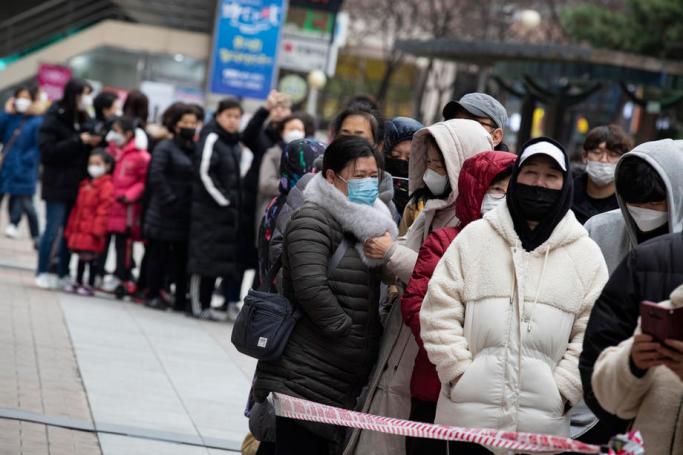It's painstaking, disruptive and yet potentially life-saving: for every confirmed coronavirus case health authorities face a race against time to identify everyone the patient has been in contact with and nip transmission in the bud.
The procedure, known as contact tracing, is standard procedure for viral epidemics, such as previous outbreaks of Ebola in western Africa and the SARS scare of the early 2000s.
"An in-depth epidemiological inquiry is immediately opened in order to identify and contact everyone who has been in close contact with these patients," France's health ministry said after announcing yet more confirmed cases on Wednesday.
"The goal is to contain the outbreak and break transmission channels," health ministry official Bruno Coignard told AFP.
So far there have been a total of 85,176 cases and 2,919 deaths from the coronavirus, according to the tally provided by John Hopkins CSSE on Saturday morning.
The evidence trail begins with the patient, who is asked to identify all individuals they could have potentially passed on the infection to.
Once a person makes the list, they are contacted by experts in infectious diseases, and then classified in one of three risk strata: negligible, weak, or moderate/elevated.
Those in the final category are individuals with whom a patient would have been in "close contact, face to face, less than a metre for a period of at least 10-15 minutes" according to Coignard.
The other end of the spectrum are people who have been in "fleeting or very occasional contact" with a patient.
"If you bump in to each other in the street, there's no reason for transmission to have occurred," said Coignard.
- 'Contact subjects' –
Those at highest risk are asked to stay home, take their temperatures twice a day and inform health authorities if they present symptoms of infection.
They receive daily calls from health workers to ensure they adhere to self-quarantine. In France, workers are eligible for compensation for the days they spend at home.
The trickiest cases to judge are those who fall in the middle level of risk.
While they are also instructed to take temperatures twice daily and contact a doctor if they develop symptoms, they are allowed to go out during the monitoring period.
This typically lasts two weeks, which is thought to be the maximum incubation period for coronavirus.
Each patient could have been in contact with several dozen people while infected with the disease, making contact tracing a challenge.
Much depends on how quickly a patient is detected.
In France and Britain the process appears to be working successfully.
In one example case, a 64-year-old man hospitalised in France provided a list of 60 "contact subjects".
But Daniel Levy-Bruhl, from Public Health France, cautioned that each case was different.
"It probably depends on the amount of virus each individual excretes, on their social life between the moment they start showing signs (of infection) and when they are isolated," he said.
While developed nations have the infrastructure in place to manage contact tracing at the current case load, there are concerns that less developed nations may struggle to prevent wider contagion.
"The worry is that there may be other countries that are less prepared, and that the virus may become more widespread worldwide," said Martin Hibberd, professor of Emerging Infectious Disease at the London School of Hygiene & Tropical Medicine.
"If that were to happen, even (developed) systems would possibly struggle to be able to check every possible suspect."
AFP












